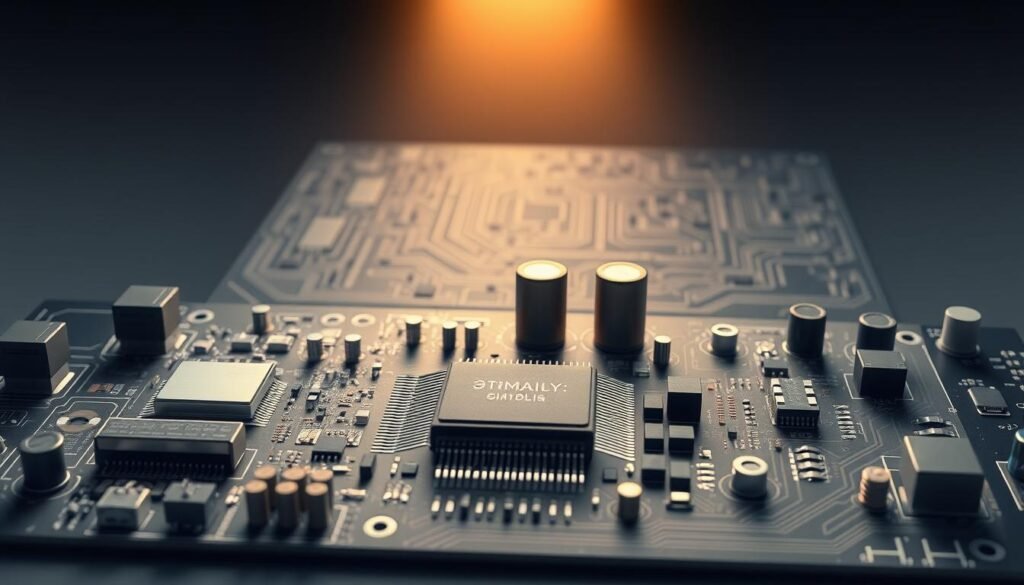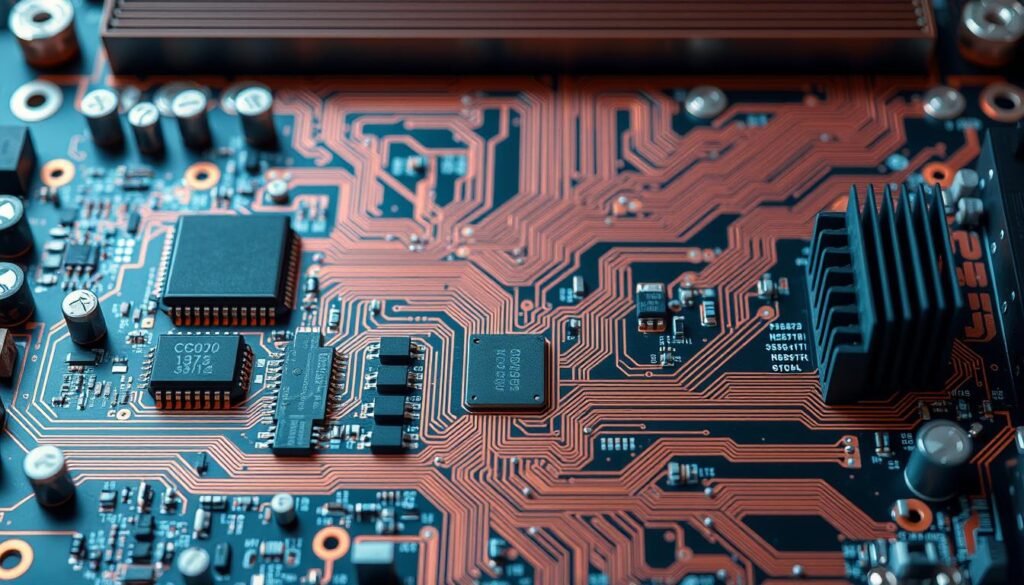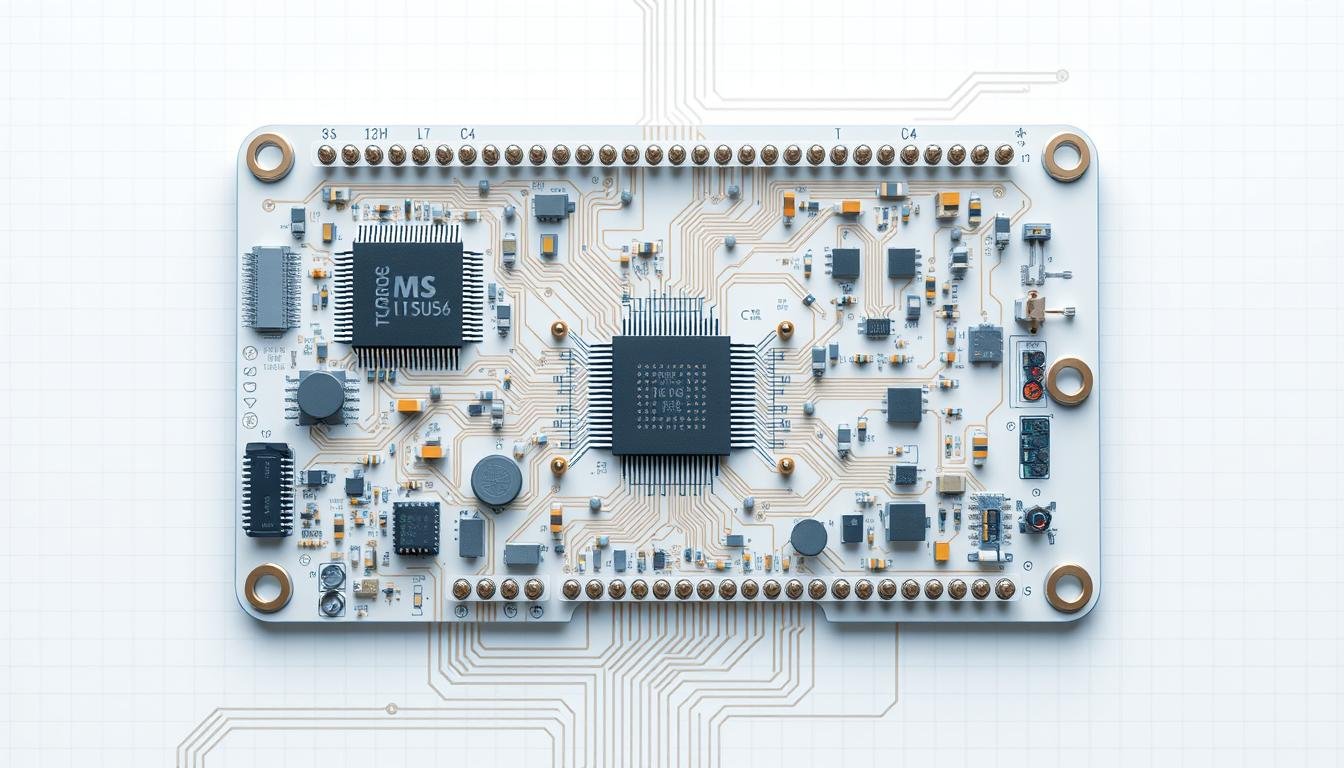Modern energy storage solutions rely on advanced electronics to ensure safety and efficiency. At the core of lithium-ion packs used in electric vehicles and renewable energy setups lies a critical system that monitors performance, balances cells, and prevents failures. This technology combines precision engineering with intelligent oversight to maximize reliability across demanding applications.
We specialize in merging cutting-edge electronic components with robust energy storage needs. Our approach focuses on creating unified solutions capable of handling complex tasks like voltage regulation and temperature control. These integrations ensure peak performance while safeguarding valuable assets in automotive, industrial, and renewable sectors.
As energy demands grow, so does the need for smarter oversight. The latest innovations go beyond basic circuitry, embedding decision-making capabilities directly into hardware. This evolution allows real-time adjustments that protect investments and extend operational lifespans.
Key Takeaways
- Advanced electronics form the backbone of modern energy storage safety and efficiency
- Integrated solutions combine monitoring, balancing, and protection capabilities
- Real-time decision-making enhances performance across industries
- Precision engineering addresses evolving technical demands
- Robust designs extend operational lifespans in critical applications
Core Technology Behind Intelligent Energy Oversight
At the heart of every reliable power solution lies a sophisticated network of interconnected components. These electronic foundations transform raw energy storage into smart, responsive assets through continuous data analysis and adaptive control mechanisms.
Electronic Backbone of Power Solutions
Printed circuit board assemblies serve as decision-making hubs in energy storage environments. We design these complex networks to process real-time information from multiple sources, enabling precise adjustments that maintain stability under varying loads. Advanced layouts incorporate fail-safe protocols that activate within milliseconds of detecting irregularities.
Transforming Energy Storage Capabilities
Modern power architectures demand more than basic connectivity – they require intelligent oversight. Our team engineers these electronic platforms to handle simultaneous tasks like thermal regulation and charge balancing. This multi-layered approach ensures optimal operation across uninterruptible power solutions and mobile applications alike.
Three critical functions define contemporary energy oversight technology:
- Continuous parameter tracking across individual cells
- Instantaneous response to voltage fluctuations
- Predictive analytics for lifespan optimization
Through strategic component placement and advanced firmware integration, we create systems that adapt to evolving operational demands while maintaining strict safety standards. This technical synergy enables smarter resource utilization across industrial and commercial environments.
Overview of Battery Management Systems and Their Applications
Intelligent energy control systems form the backbone of modern power solutions across industries. These technologies maintain stability in devices ranging from electric vehicles to grid-scale storage installations. Their role extends beyond basic oversight, integrating predictive analytics and adaptive responses.
Key Functions and Safety Features
We design systems that deliver multi-layered protection for energy storage units. Core capabilities include real-time voltage tracking and thermal regulation. These features prevent catastrophic failures while optimizing performance.
Critical safeguards include:
- Automatic shutdown during short circuits
- Dynamic load balancing across cells
- Cloud-based health diagnostics
| Function | Application | Benefit |
|---|---|---|
| Overcharge prevention | EV charging stations | Fire risk reduction |
| Temperature monitoring | Solar farms | Extended lifespan |
| Current regulation | Marine equipment | Corrosion resistance |
| Data logging | Medical devices | Compliance tracking |
Modern implementations now incorporate AI-driven pattern recognition. This advancement enables predictive maintenance in telecom infrastructure and robotic systems. Our solutions adapt to unique environmental challenges, from deep-sea pressures to desert heat.
Communication interfaces allow seamless integration with existing architectures. This interoperability proves vital for data centers and industrial automation. Through continuous innovation, we ensure systems meet evolving safety standards while boosting operational efficiency.
PCBA for Battery Management Systems (BMS): Fundamental Components

Precision electronic architectures form the operational foundation of modern energy storage oversight. These systems depend on carefully selected hardware elements working in unison to maintain stability and safety. Three core technologies enable real-time monitoring and adaptive responses in demanding environments.
Essential Elements: Microcontrollers, Sensors, and Protection Circuits
We engineer microcontrollers to process thousands of data points per second from connected cells. These processors execute safety protocols within 2 milliseconds when detecting abnormal voltage fluctuations. Advanced algorithms predict temperature changes before they impact battery pack performance.
Differential operational amplifiers measure cell-to-cell variations with 0.1% accuracy. This precision prevents energy imbalance across stacked cells in high-capacity packs. Rail-to-rail amplifiers extend measurement ranges to handle extreme conditions in electric vehicle applications.
| Component | Primary Function | Impact |
|---|---|---|
| Microcontroller | Real-time analysis | Prevents thermal runaway |
| Differential Op-amps | Voltage balancing | Extends pack lifespan |
| Protection Circuits | Emergency shutdown | Reduces fire risks |
| Passive Components | Signal conditioning | Improves data accuracy |
Our designs incorporate layered protection mechanisms that activate simultaneously during faults. Current sensors work with temperature detectors to create redundant safety checks. Communication interfaces relay status updates to external control systems while maintaining electromagnetic compatibility.
We implement specialized PCB traces to handle high-current paths without voltage drops. Thermal management features integrate directly into the board layout, ensuring stable operation across -40°C to 125°C ranges. These combined elements create resilient architectures for mission-critical energy storage applications.
Advanced Design Considerations for BMS Board Assembly

Sophisticated thermal dynamics and precise electrical oversight define modern energy control architectures. Our engineers balance these critical factors through innovative layout strategies that address evolving technical demands in compact spaces.
Thermal Management and Voltage Monitoring Strategies
We implement multi-stage heat dissipation systems combining thermal vias with copper-filled layers. These features channel excess energy away from sensitive components while maintaining structural integrity. Our designs achieve 40% better thermal conductivity than standard layouts through strategic material selection.
Voltage tracking requires precision measurement circuits with 0.05% accuracy thresholds. We employ differential sensing techniques that filter electromagnetic interference, ensuring reliable data across fluctuating conditions. Continuous calibration protocols maintain stability through 10,000+ charge cycles.
| Thermal Technique | Implementation | Performance Gain |
|---|---|---|
| Heat Sinks | Aluminum alloy substrates | 15°C reduction |
| Thermal Interface Materials | Graphene-enhanced pads | 22% efficiency boost |
| Component Spacing | 3D thermal modeling | 30% longer lifespan |
Multilayer configurations separate analog and digital signals using shielding layers. This approach reduces crosstalk by 60% while accommodating complex routing patterns. Our team optimizes component density through automated placement algorithms that consider both thermal profiles and signal integrity.
Environmental resilience features include conformal coatings that withstand extreme humidity and vibration. We validate designs through 12-stage stress tests simulating decade-long operational conditions. These rigorous protocols ensure consistent performance across automotive and industrial applications.
Manufacturing Challenges and Best Practices in BMS PCBA Production
Precision manufacturing processes demand specialized solutions to meet strict technical requirements. We overcome production hurdles through advanced process controls and layered quality assurance protocols, ensuring every unit meets exacting standards for mission-critical applications.
Quality Control: Three-Phase Verification Process
Our approach combines automated inspection with human expertise across three stages:
- Material validation: X-ray fluorescence scanners verify alloy compositions
- In-process checks: 3D AOI systems detect micron-level solder defects
- Final validation: Burn-in testing simulates 5 years of operational stress
This multi-layered strategy ensures 99.98% defect-free output while maintaining compliance with optimal performance strategies.
High-Density Layout Optimization Techniques
Modern energy oversight boards require innovative layout solutions:
| Challenge | Solution | Outcome |
|---|---|---|
| Signal interference | Shielded via arrays | 45% noise reduction |
| Thermal hotspots | Copper-balanced stacking | 22°C lower operating temps |
| Component density | Microvia technology | 68% space savings |
We implement design-for-manufacturing principles during prototyping to prevent costly revisions. Thermal simulation models predict performance across extreme conditions, while automated routing algorithms maintain 0.1mm trace spacing accuracy.
Continuous process improvements help balance technical demands with production efficiency. Our teams validate every design through 14 distinct environmental stress tests, ensuring reliable operation from Arctic cold to desert heat.
Enhancing Battery Performance with Integrated PCBA Designs
Maximizing energy storage efficiency requires intelligent coordination between hardware and software. We engineer solutions that adapt to dynamic operational demands while maintaining strict safety protocols. This approach ensures consistent battery performance across diverse applications.
Balancing Precision and Protection
Our designs employ real-time voltage tracking during charging cycles to prevent energy imbalance. When individual cells reach full capacity, the system reroutes power to undercharged units. This method maintains advanced battery PCB solutions while extending pack longevity.
During discharging, multi-layered safeguards monitor critical thresholds. Protective shutdowns activate within milliseconds when detecting voltage drops below safe levels. These protocols prevent irreversible damage to energy storage units.
We implement adaptive balancing strategies that redistribute charge across cells. This technique reduces wear disparities by 40% compared to passive systems. Our intelligent energy control architectures analyze usage patterns to optimize future cycles.
Predictive algorithms combine thermal data with historical performance metrics. This integration enables proactive adjustments before efficiency losses occur. The result? Up to 30% longer operational lifespans for high-demand applications.
FAQ
How does PCBA design impact battery pack safety in energy storage systems?
What thermal management strategies are critical for BMS board reliability?
Why is cell balancing essential in electric vehicle battery management?
How do you ensure manufacturing quality for high-density BMS assemblies?
What communication interfaces do modern battery management systems require?
How does your approach optimize charging efficiency in lithium-ion packs?
About The Author
Elena Tang
Hi, I’m Elena Tang, founder of ESPCBA. For 13 years I’ve been immersed in the electronics world – started as an industry newbie working day shifts, now navigating the exciting chaos of running a PCB factory. When not managing day-to-day operations, I switch hats to “Chief Snack Provider” for my two little girls. Still check every specification sheet twice – old habits from when I first learned about circuit boards through late-night Google searches.
